Before There Was Iron Man, There Was Hardiman: The History of Powered Exoskeletons.
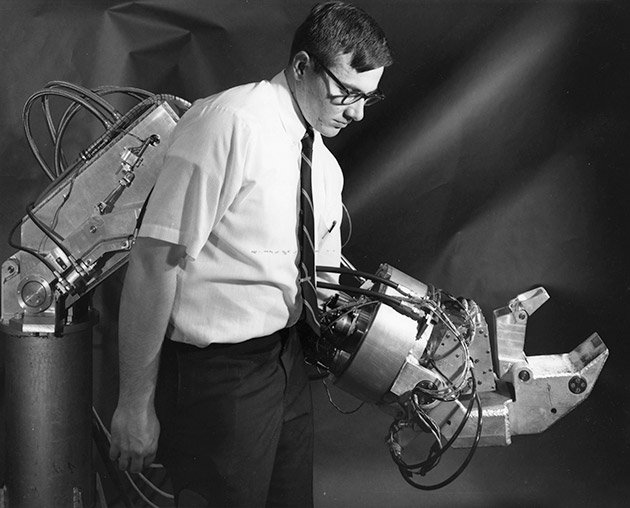
Powered armor is a staple of science fiction and has been for decades. But while we've attained many of the promises of scifi today, like VR and electric cars, powered exoskeletons still elude us. Not for lack of trying though, in fact it's been an ongoing area of research since the sixties.
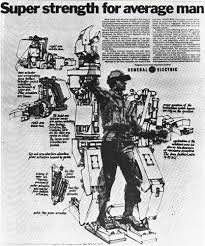
Hardiman, which stands for “Human Augmentation Research and Development Investigation" (plus "Man" for "manipulator") was a General Electric project aiming to produce a wearable humanoid robotic vehicle for the purpose of amplifying human strength. The applications range from military, to construction, to disaster relief.
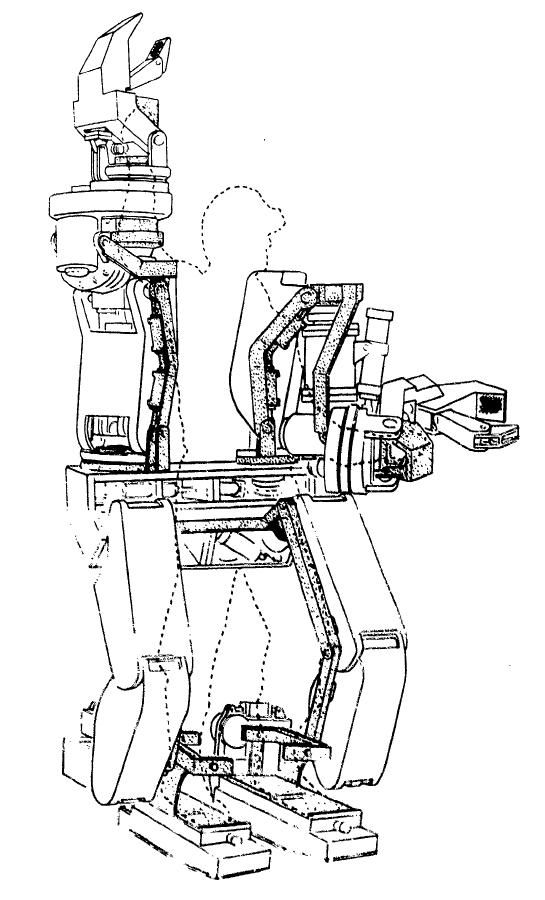
The Hardiman project started in November of 1965. Problems cropped up almost immediately. Entering uncharter engineering territory, a lot unknown unknowns were discovered, problems which exoskeleton engineers are in some cases still trying to solve. Hydromechanical servos were abandoned early on due to instability, and replaced with electrohydraulic servos.
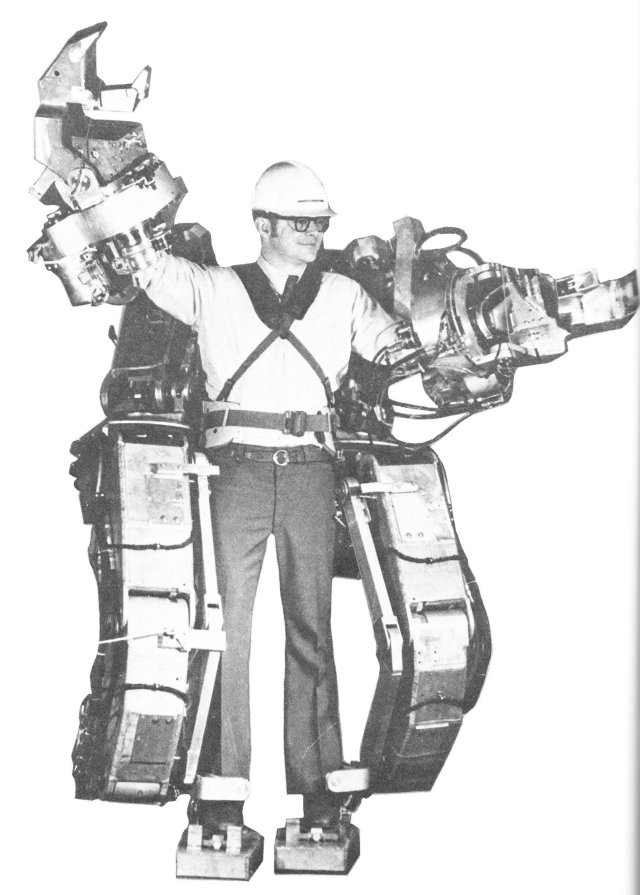
By 1969 the arms were completed and operational. The legs were finished by 1970, but the understanding of bipedal locomotion principles necessary for robotic two-legged walking did not yet exist. As a consequence the Hardiman could not stand up or walk, either by itself or with a human pilot, and had to be supported.
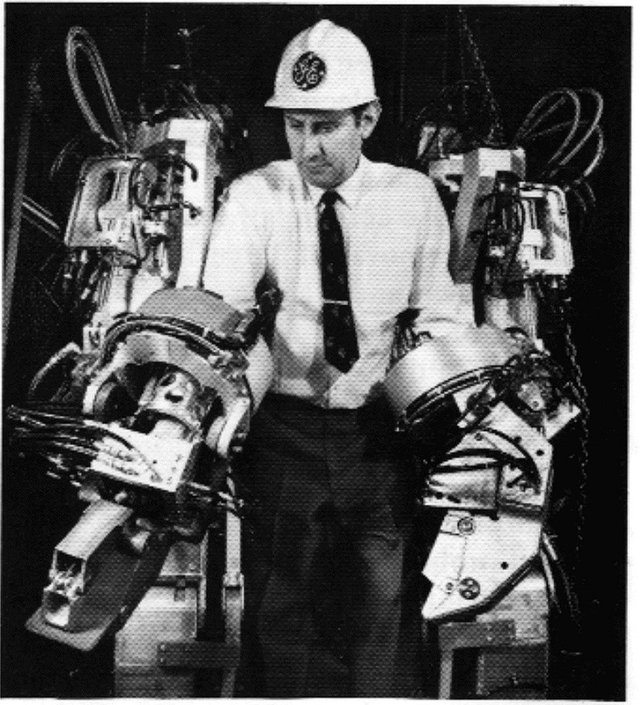
Ultimately the Hardiman exoskeleton proved too difficult to control, its movements too abrupt and unpredictable. No human ever piloted the full suit for fear of injury. But the quest for powered exoskeletons hasn't been abandoned! More recently, Raytheon led the charge with their Sarcos line of powered exoskeletons seen below:
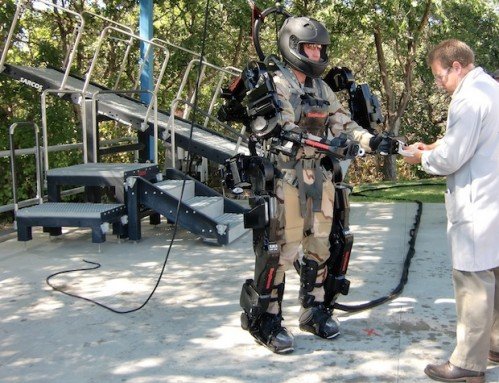
Sadly, the Sarcos exoskeleton was also doomed. The suit itself worked beautifully, but no compact power source exists capable of feeding such an energy hungry robotic device for any useful length of time, hence why you see it tethered in the photo. These findings inspired efforts to design the simplest, most energy-efficient exoskeleton possible.

The H.U.L.C. is the most recent result of that endeavor. Powered by conventional lithium ion batteries, the run time is between three and four hours depending on the workload. Rather than add powered arms which would only increase the energy draw, the H.U.L.K. features an over the shoulder crane harness for assisting in lifting heavy objects.
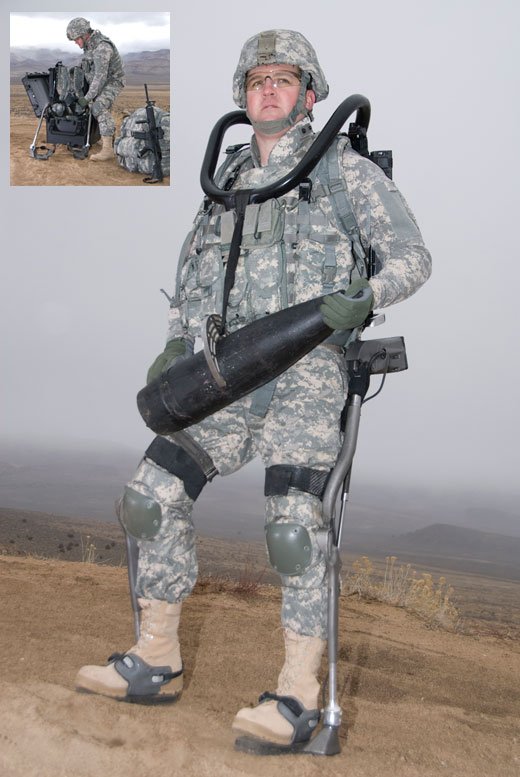
However the exoskeleton of the future won't be confined to the battlefield. Besides enhancing the strength of factory and agricultural workers (which reduces the chance of injury claims and allows workers to keep at it into their 70s), Honda plans to commercialize medical exoskeletons to help the elderly stay out of wheelchairs.
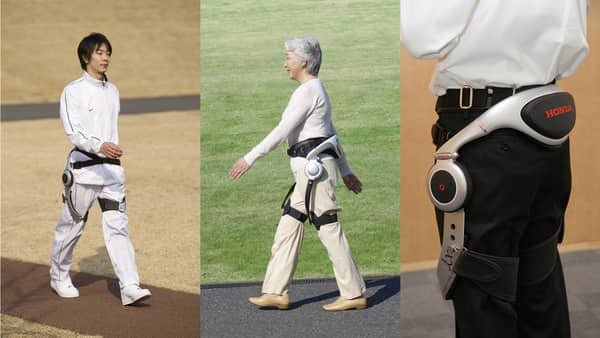
They join the likes of Cyberdyne, who made waves some years back with their HAL exoskeleton. Hal works, but doesn't enhance strength as much as you might expect and is for the most part an engineering showpiece. Honda's exoskeletons and emerging prototypes from companies like ReWalk have a better chance of making it to market at a price regular people can afford.
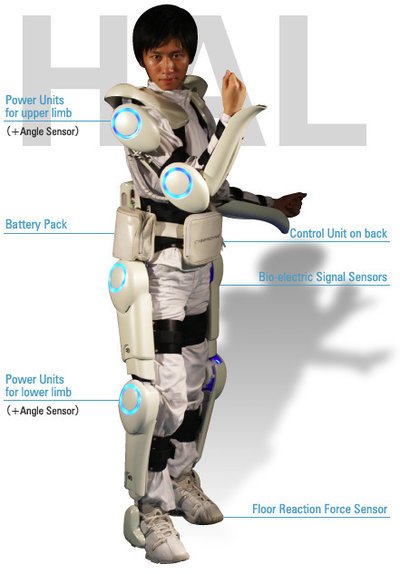
We've come a long way. Every major hurdle has been overcome, save for power. We won't have full bodied super-strong exoskeletons any time soon until that's solved. But don't be surprised if in the coming years you start to see the well to do elderly out and about in a power body exoskeleton, as an alternative to a mobility scooter.
so how much should a guy save up so that he can get one when they become commercially available?
I would estimate around ten grand if you want to be an early adopter. Probably much less a few years later.
Awesome inventions!